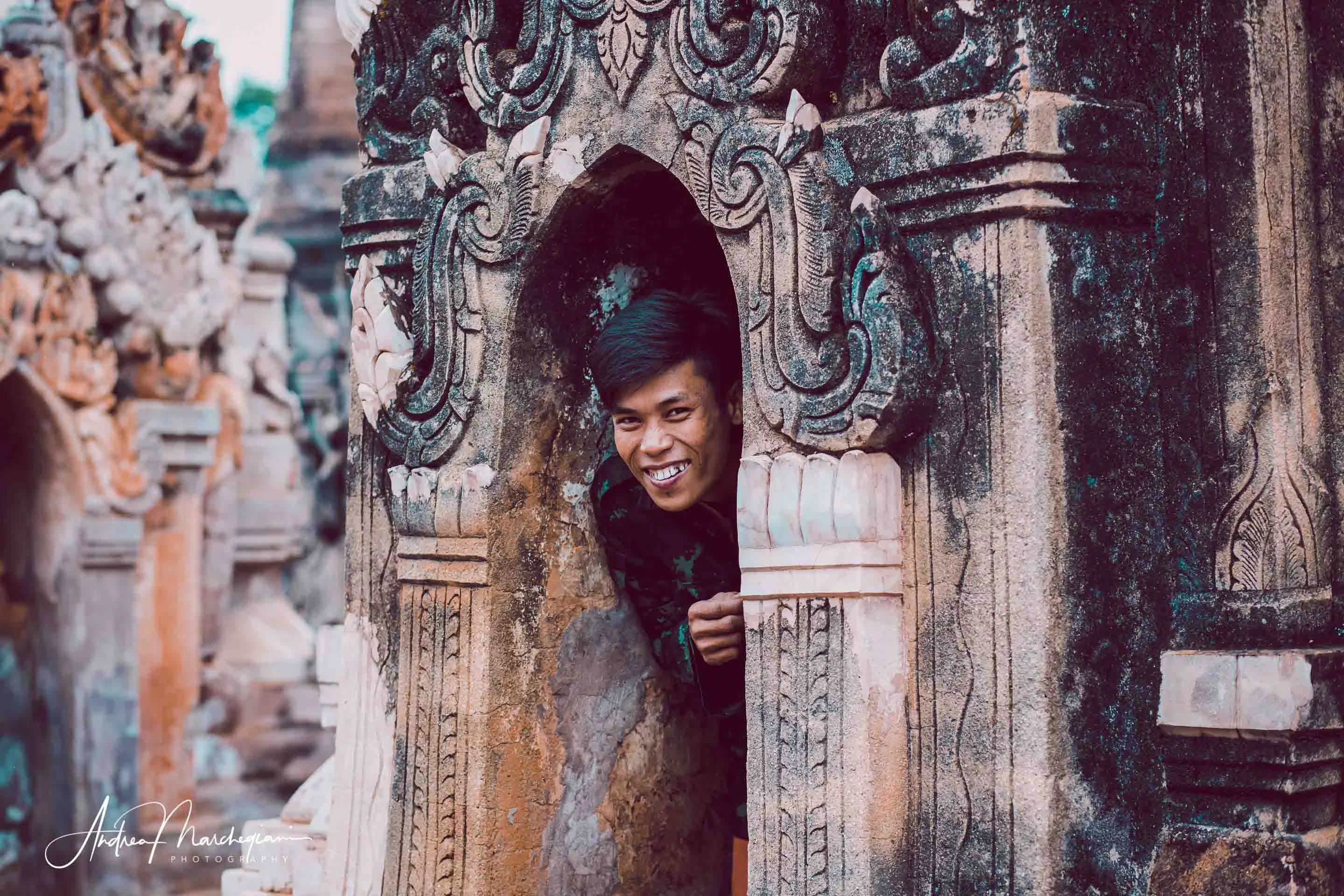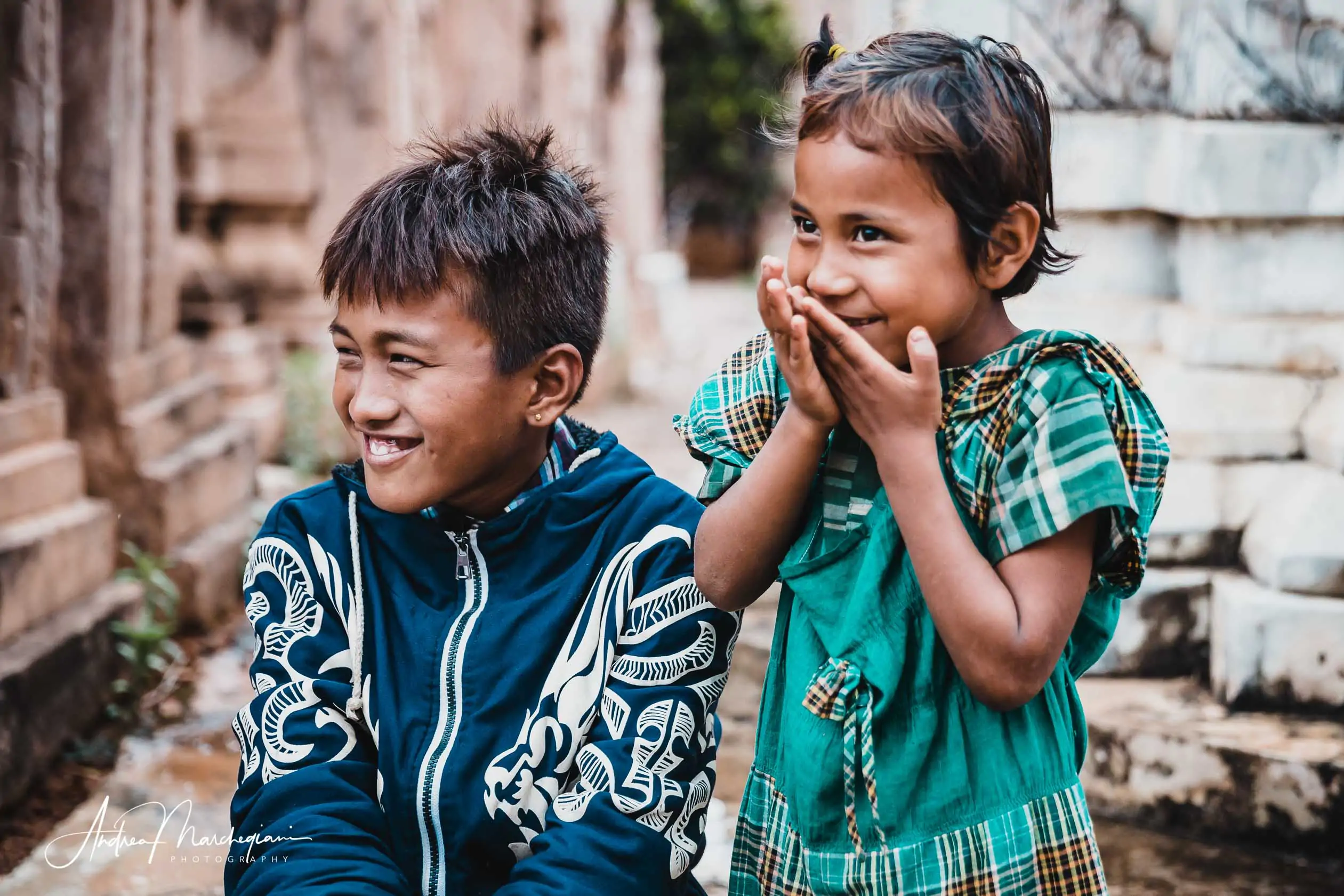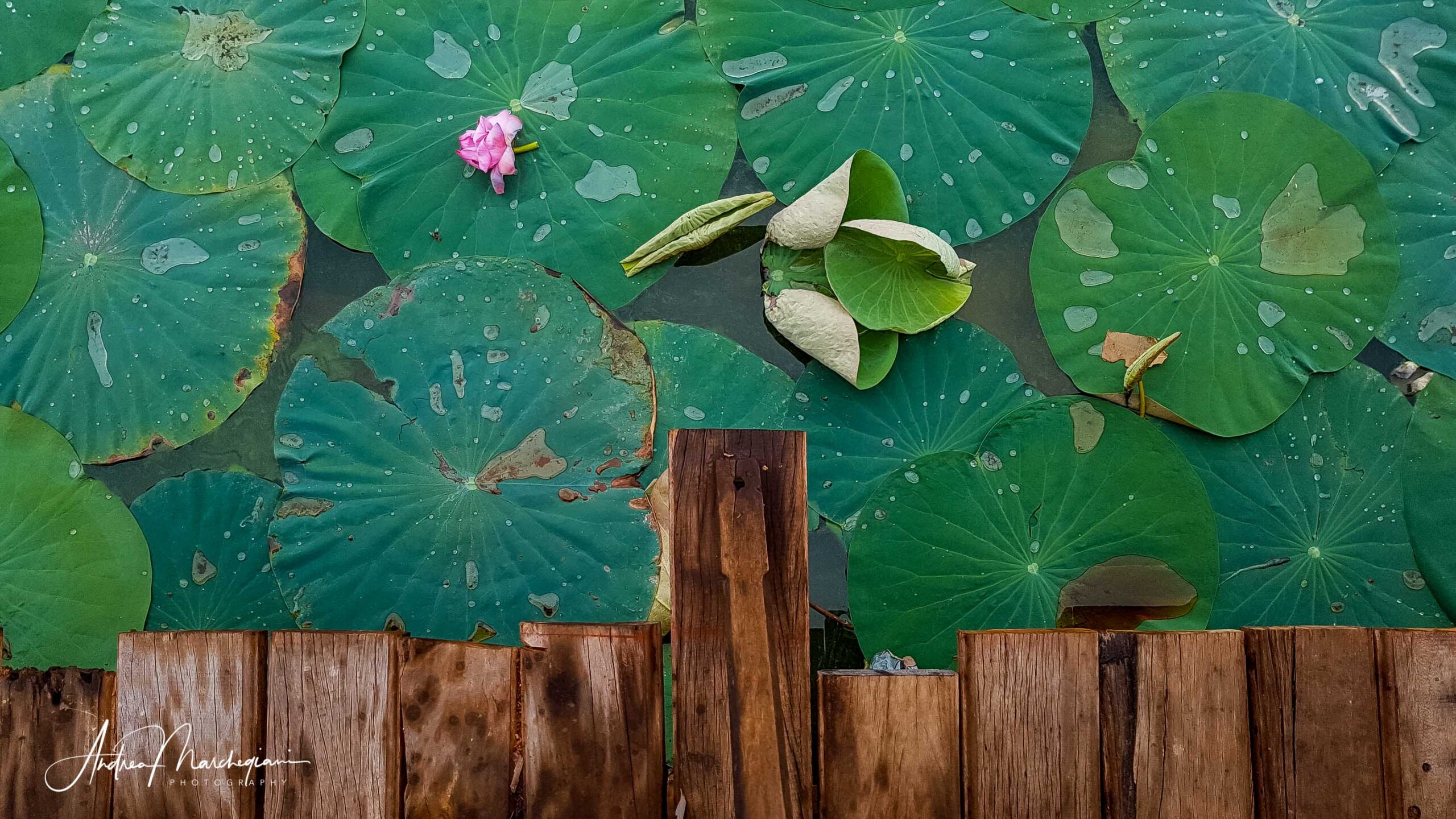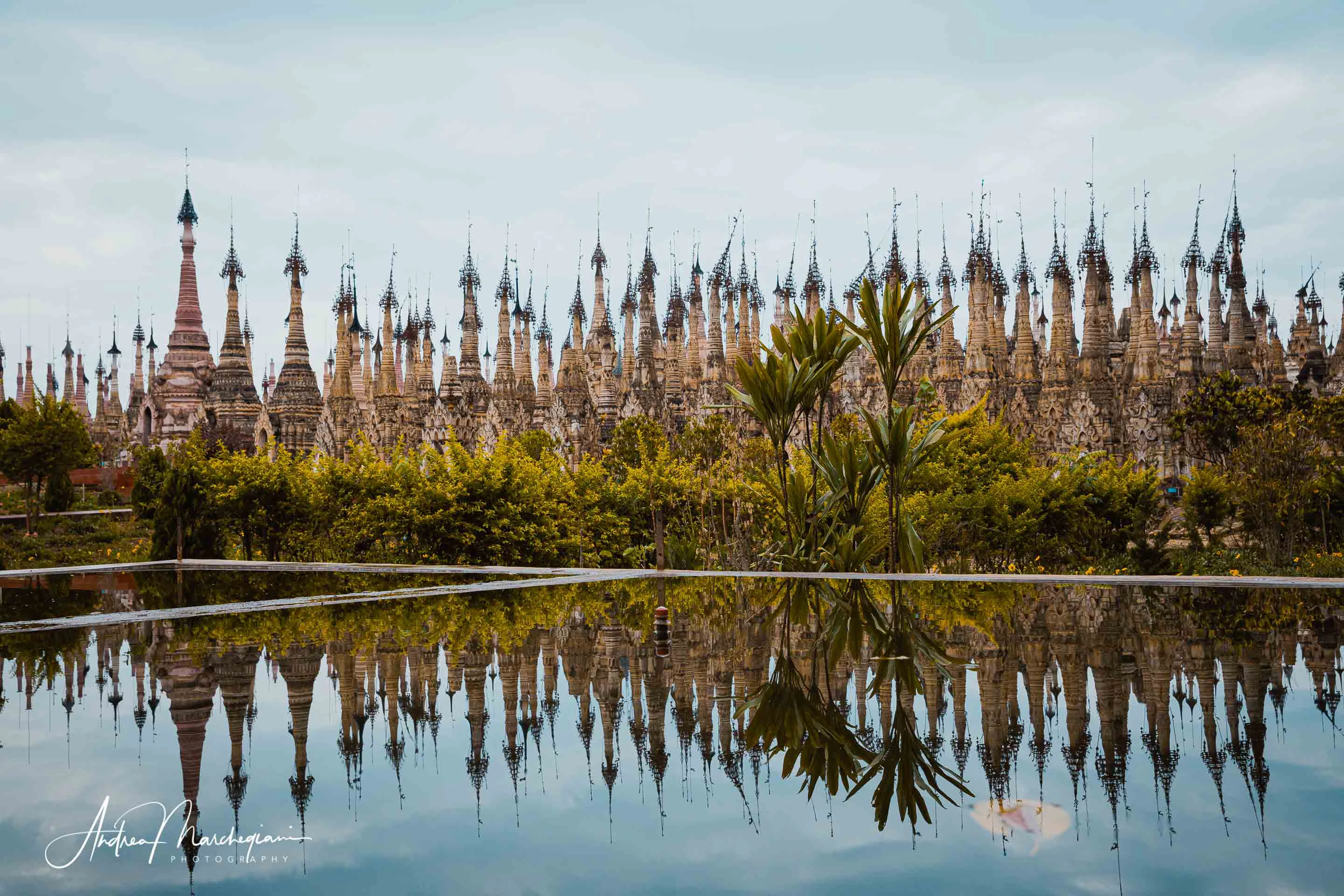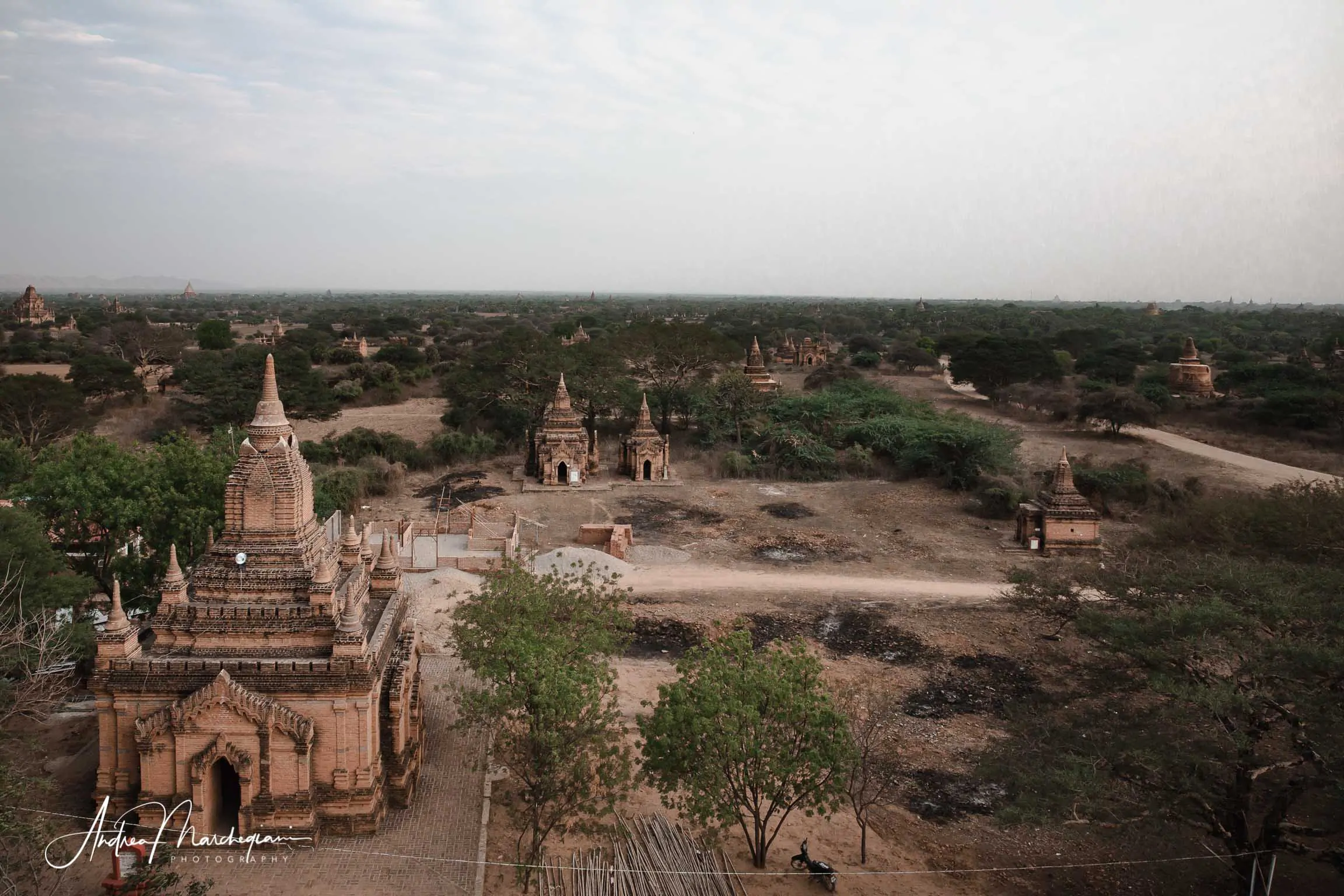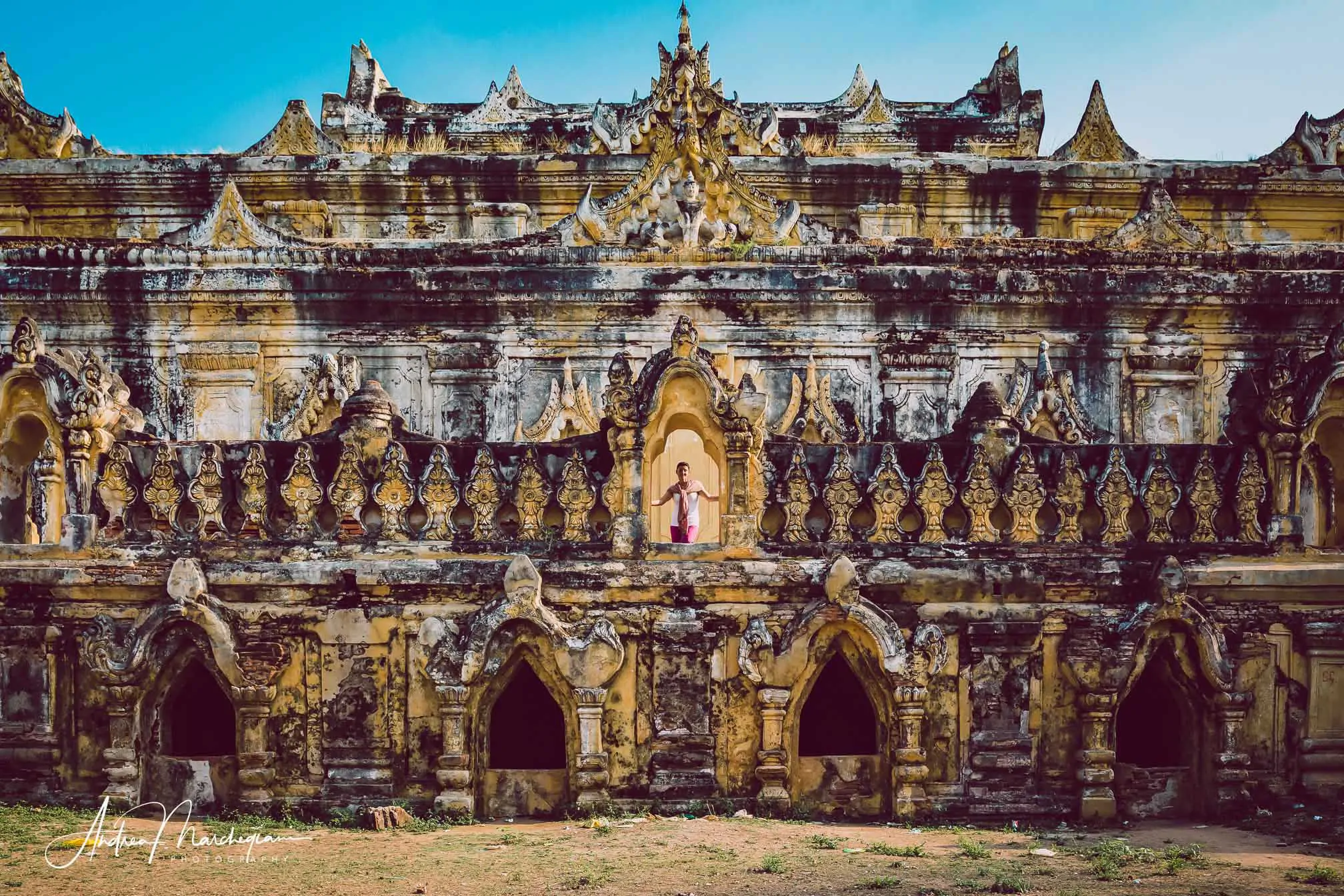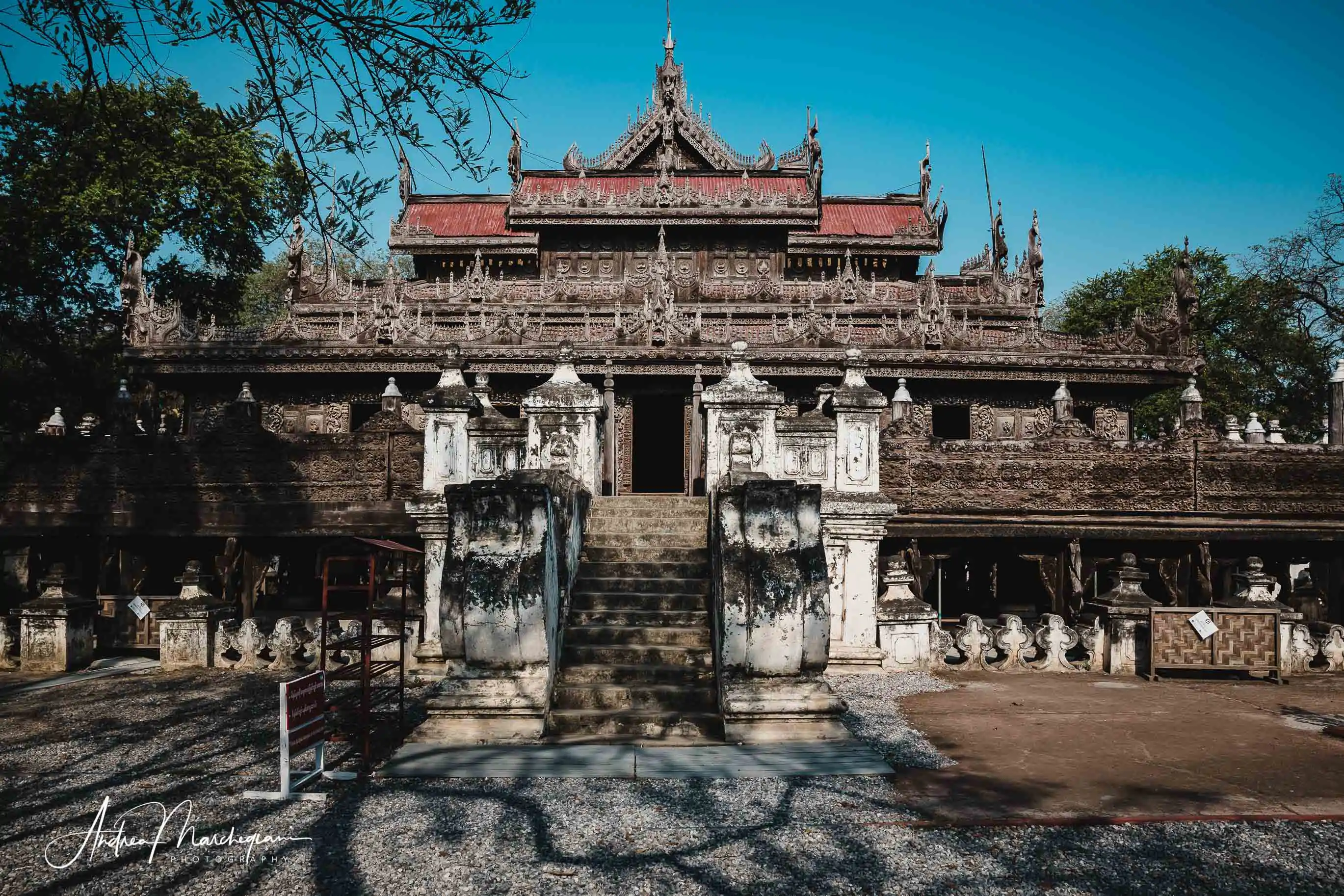
- Home
- Photo Galleries
- Portrait Photography
- Landscape Photography
- Street Photography
- China
- Ethiopia
- India
- Holy Ganges
- Varanasi
- Varanasi Ganga Aarti
- Varanasi, Manikarnika Ghat
- Varanasi Streets & Alleys
- Varanasi Demolition
- Varanasi Fruit Market
- Sarnath
- Brick Kilns
- Tamil Nadu, Chennai & Mamallapuram
- Tamil Nadu, Fort Tirumayam & Madurai
- Tamil Nadu, Tiruvannamalai & Thanjavur
- Kerala, Munnar
- Kerala, Peryiar
- Kerala, Backwaters
- Kerala, Kochi
- Kazakhstan
- Myanmar
- Senegal
- Uzbekistan
- Travel Blog
- China
- Ethiopia
- India
- Tamil Nadu & Kerala
- Varanasi
- Whato to do in Varanasi
- Varanasi Life along the Ghats
- Varanasi Death along the Ghats
- Varanasi Ganga Aarti Ceremony
- Varanasi demolished to honor Shiva
- Varanasi Fruit Market
- “Varanasi, A Journey into the Infinite”
- Sarnath
- All about River Ganges
- Holy Shit. All about Indian Cow Dung
- Clean India Project
- Brick factories
- Tilaka, pundra, bindi: what is the mark on Indian foreheads?
- Kazakhstan
- Mongolia
- Ulaanbaatar, the coldest capital in the world
- What to do in Ulaanbaatar
- Chinggis Khan Museum, 6 floors of Mongolian history
- Gorkhi-Terelj National Park and Bodgkhan Natural Reserve
- Altai Mountains, Things to do in Olgii and Sagsai
- Living with the Eagle Hunters
- Sagsai Eagle Festival
- Navrus Festival
- Xöömej, Mongolian throat singing
- Mongolian Food
- Myanmar
- Senegal
- Uzbekistan
- Latest Posts
- Photography Blog
- About
- Prints
Share with your friends:
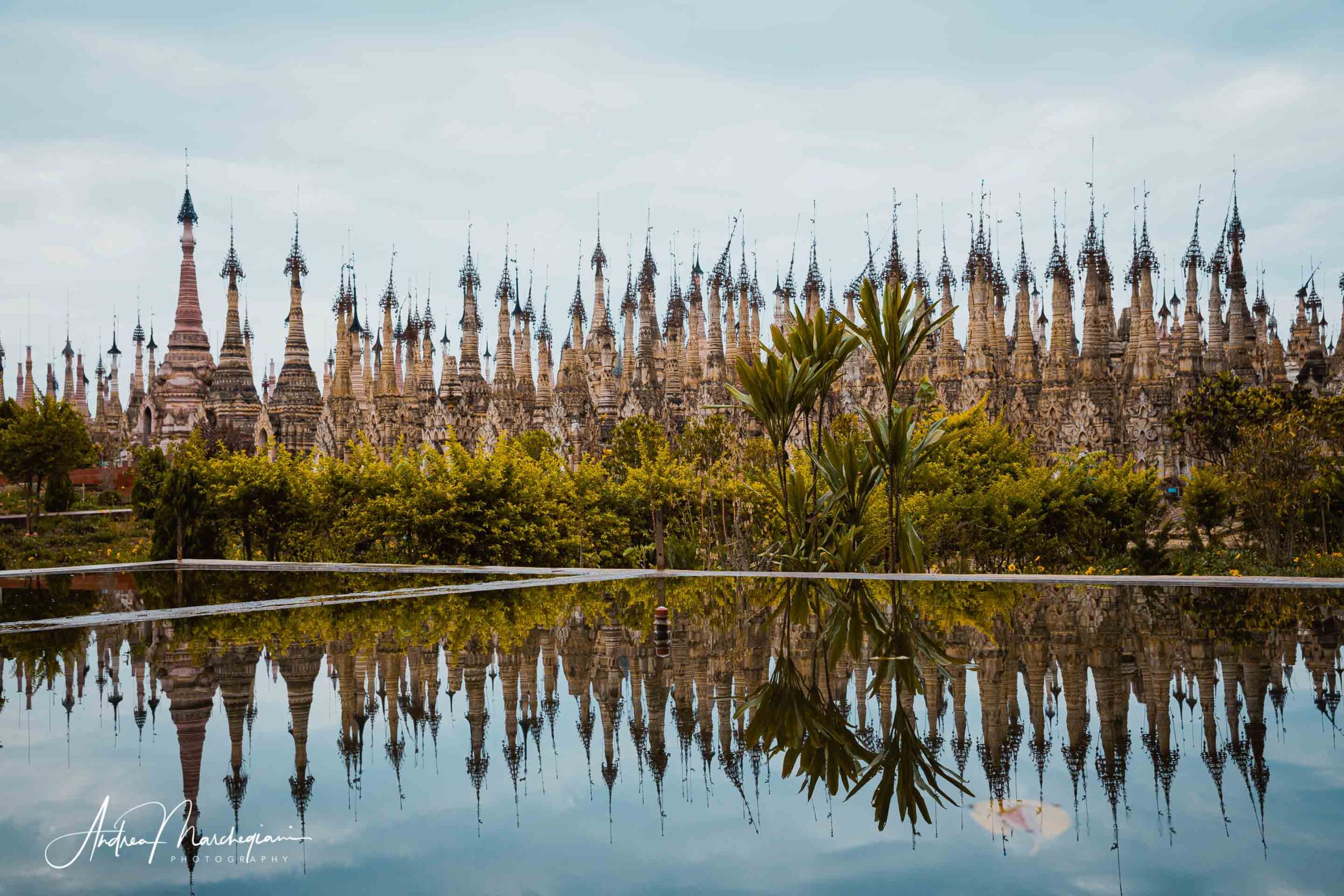
Taunggyi village
Visiting Inle Lake is an experience that fills the eyes and satisfies the soul. The calm expanses of water, the Intha fishermen, the floating gardens, the giraffe women… A couple of days on Inle Lake are worth the cost of a trip to Myanmar.
If you have enough time, however, you should not miss a little detour to the east coast of the lake and visit Taunggyi village. It is located over 1,400 above sea level and therefore protected from the humid heat of the rest of the region. Not surprisingly, Taunggyi was chosen by the British as a place to come to refresh and enjoy the view of Inle Lake; the village is also the crossroads of all illegal trade between Myanmar and Thailand, China and India, as evidenced by the gem market.
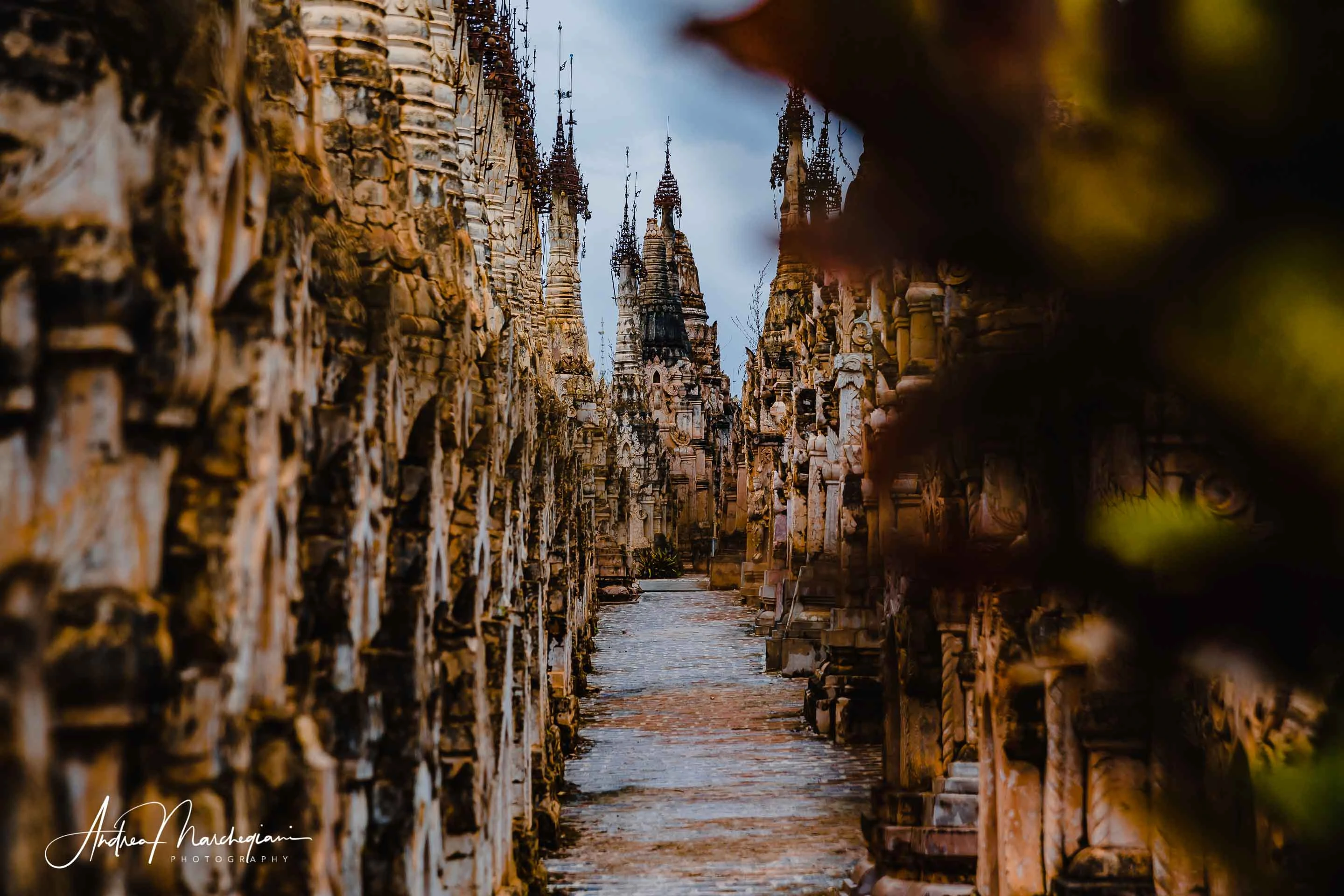
Kakku, a pagoda forest
If -as I hope- you are not in Myanmar for smuggling reasons, Taunggyi is worth coming to reach the archaeological site of Kakku, with its 2,478 stupas arranged in orderly rows and placed along the ridge of a hill. I know, those who visit Myanmar soon get used to the abundance of stupas, pagodas and Buddha statues scattered chaotically on every street corner.
Yet Kakku really manages to impress.
Open to tourists only since 2000, it is still a little known destination and deserves the long detour by bus or taxi to reach it (about three hours from the lake).
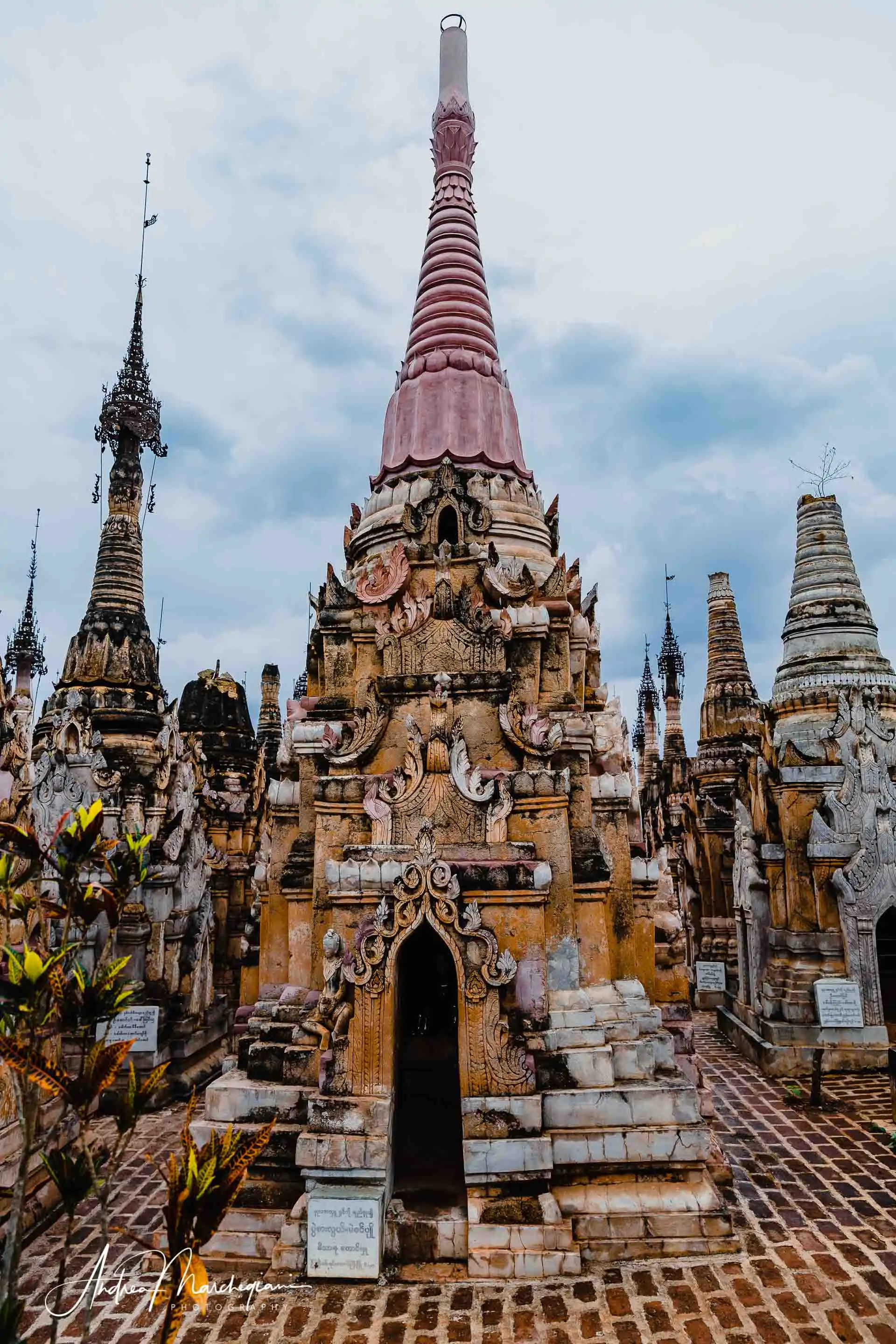
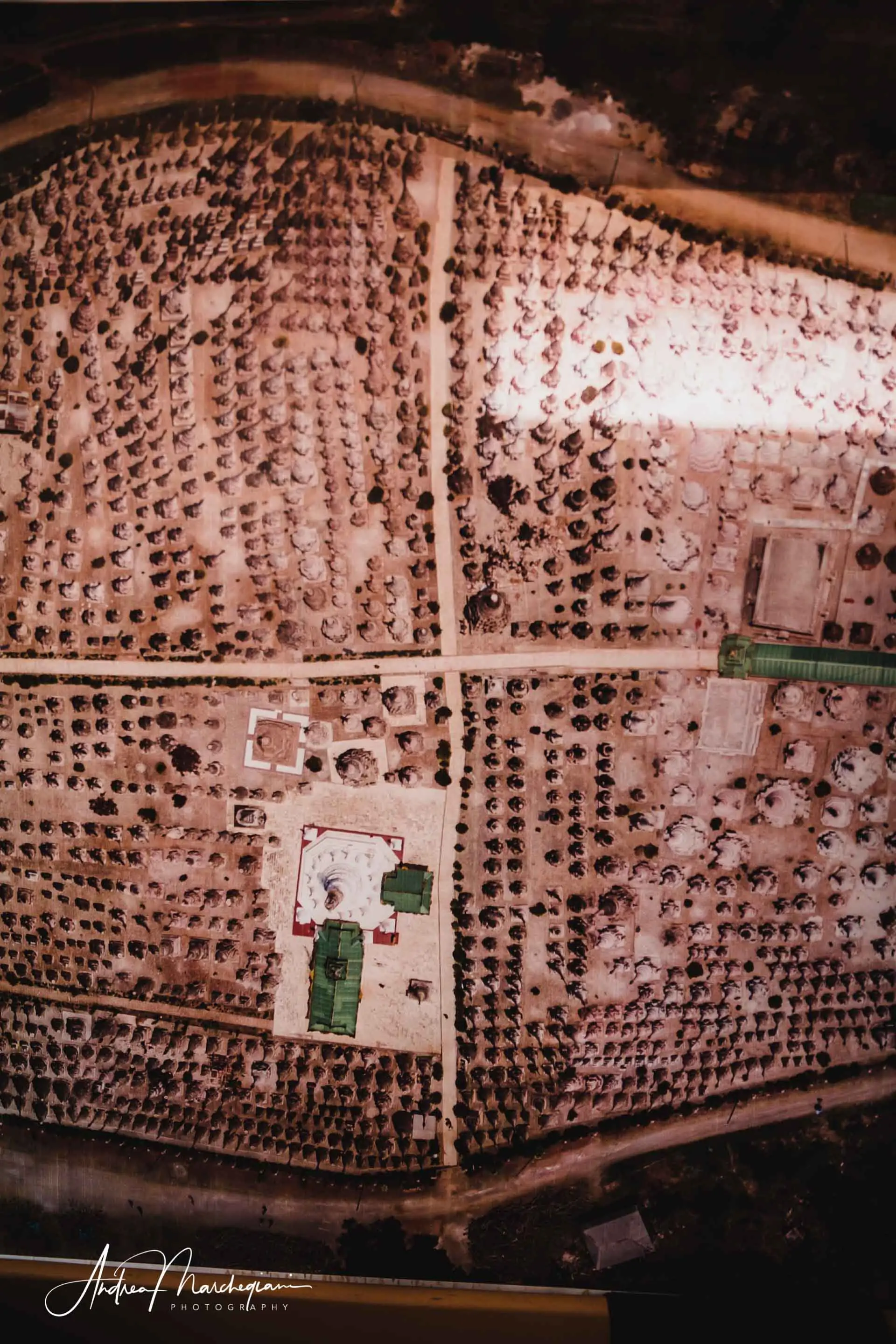
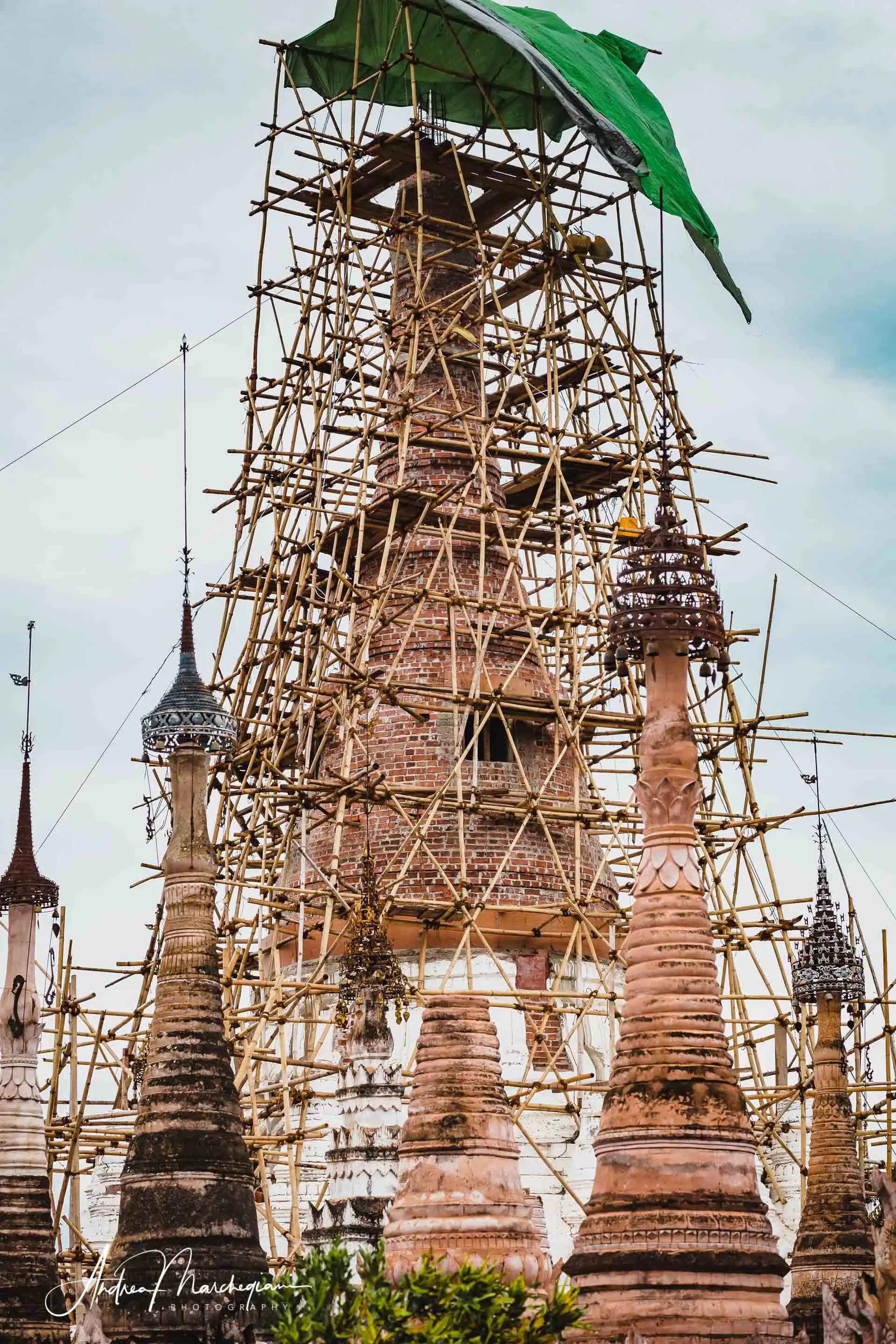
Entering the site, I am given a tour guide and asked to take off my shoes, as it happens in all Burmese places of worship, for a matter of respect. It is a cloudy day, yesterday it must have rained a lot because the roads are covered with mud, as well as the paths of the site.
I’m not usually picky, but this time I’m hesitant. I can already imagine the moment I have to put my shoes back on and muddy my socks… Fortunately I am sharing the journey with an immunologist, who manages to give me courage.
“Andrea, boost your immune system. The more you use it, the more you strengthen it!” she laughs.
How to counter such a statement? “Moreover, there is a water pipe at the exit and you can wash yourself after the visit”, she giggles.
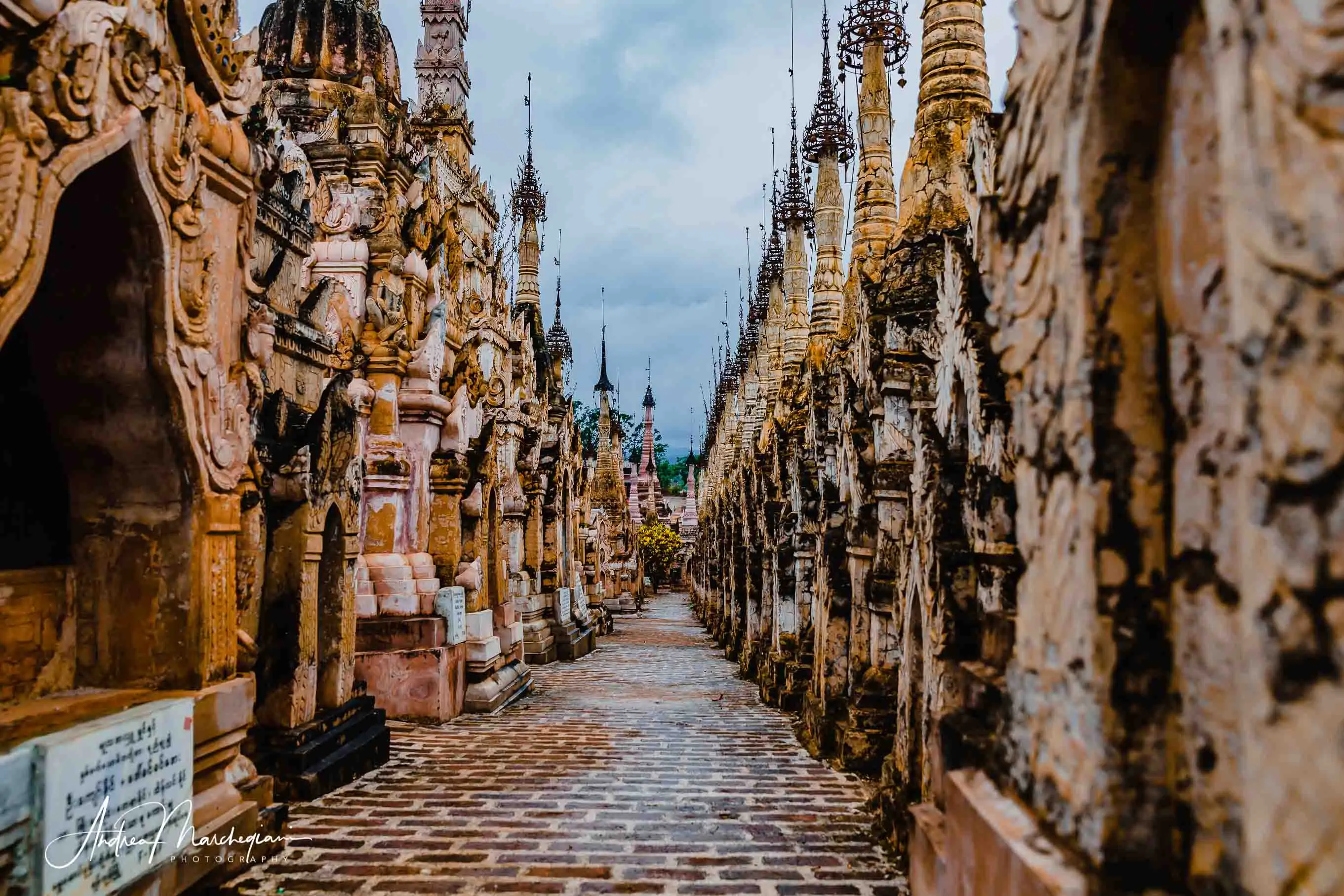
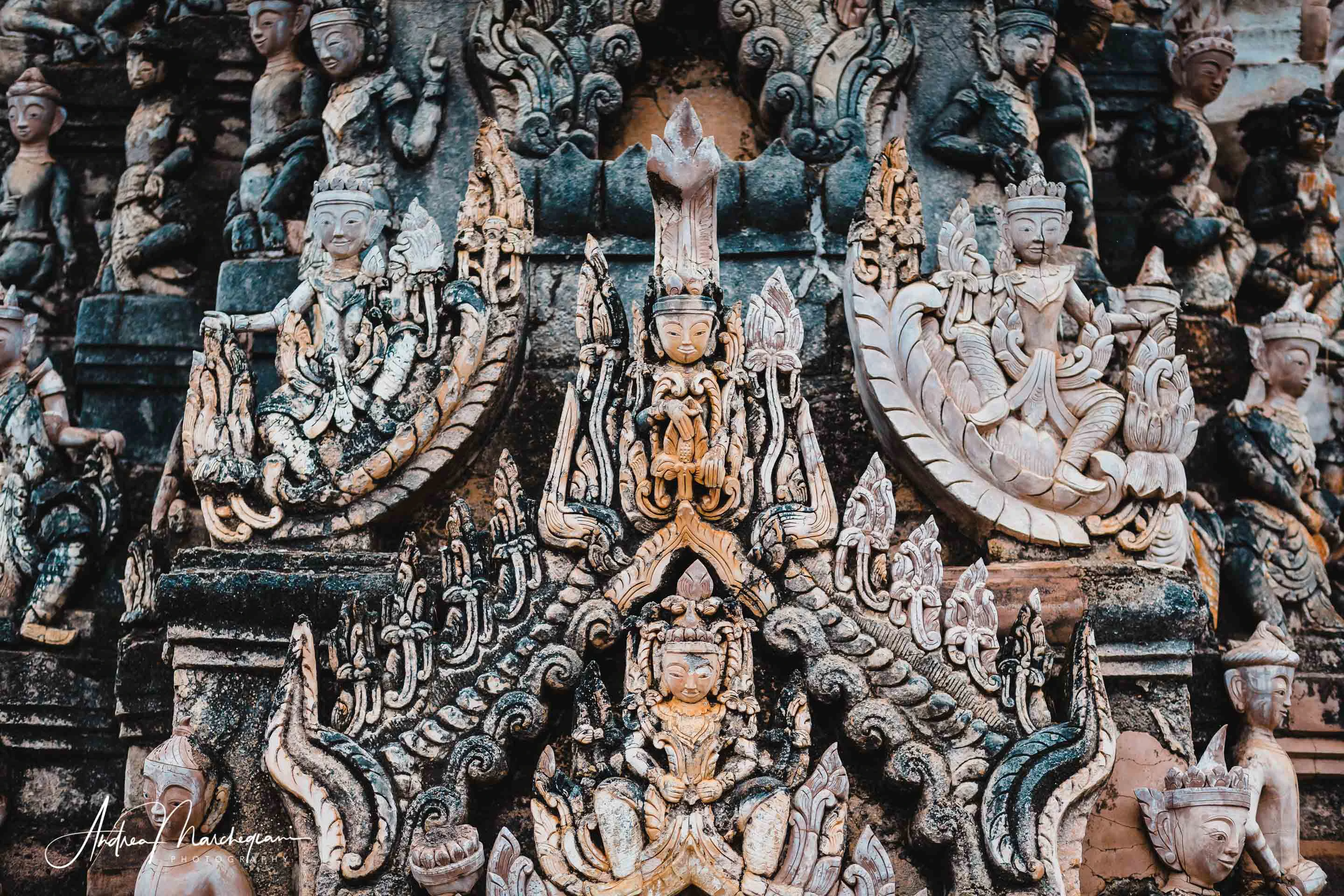
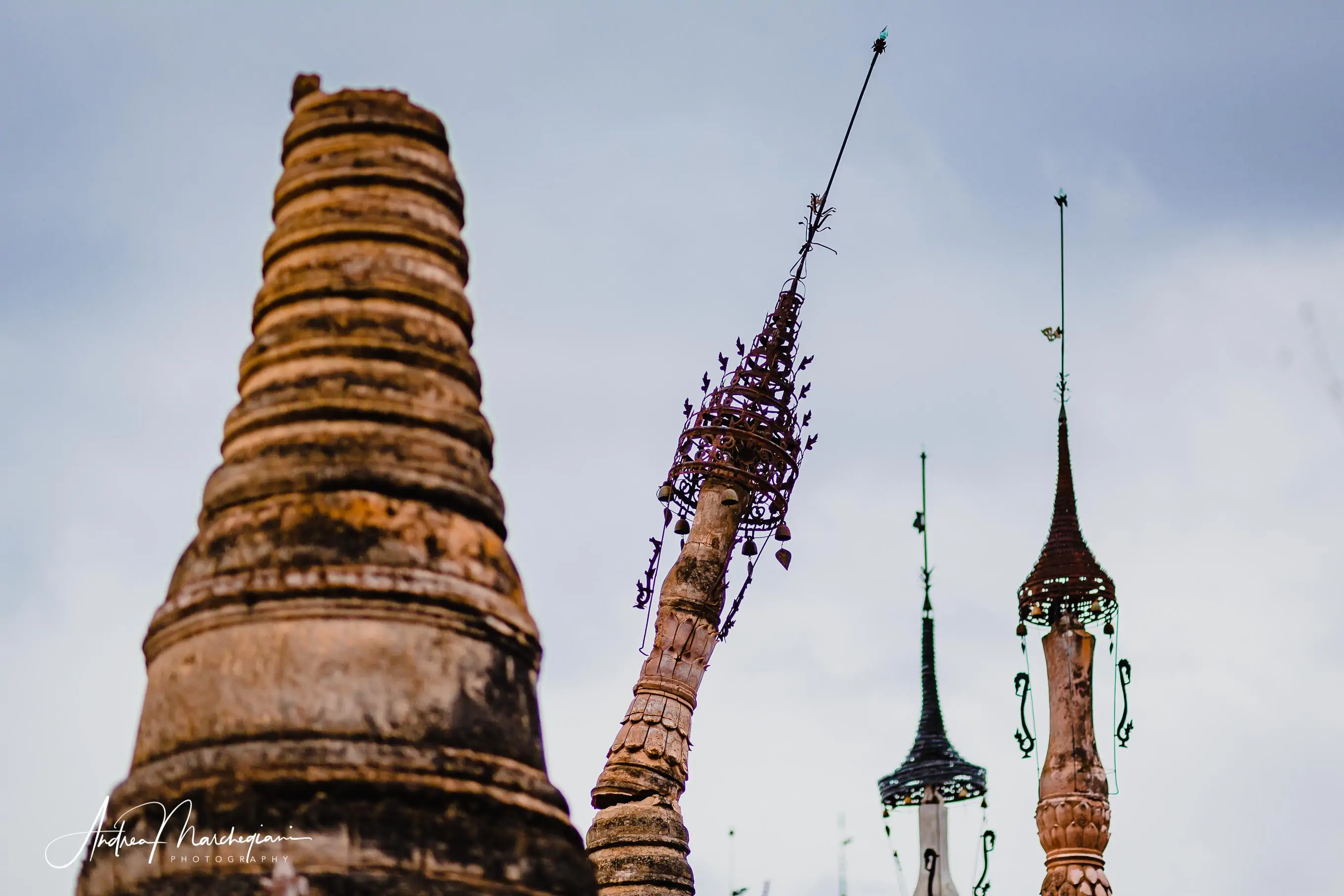
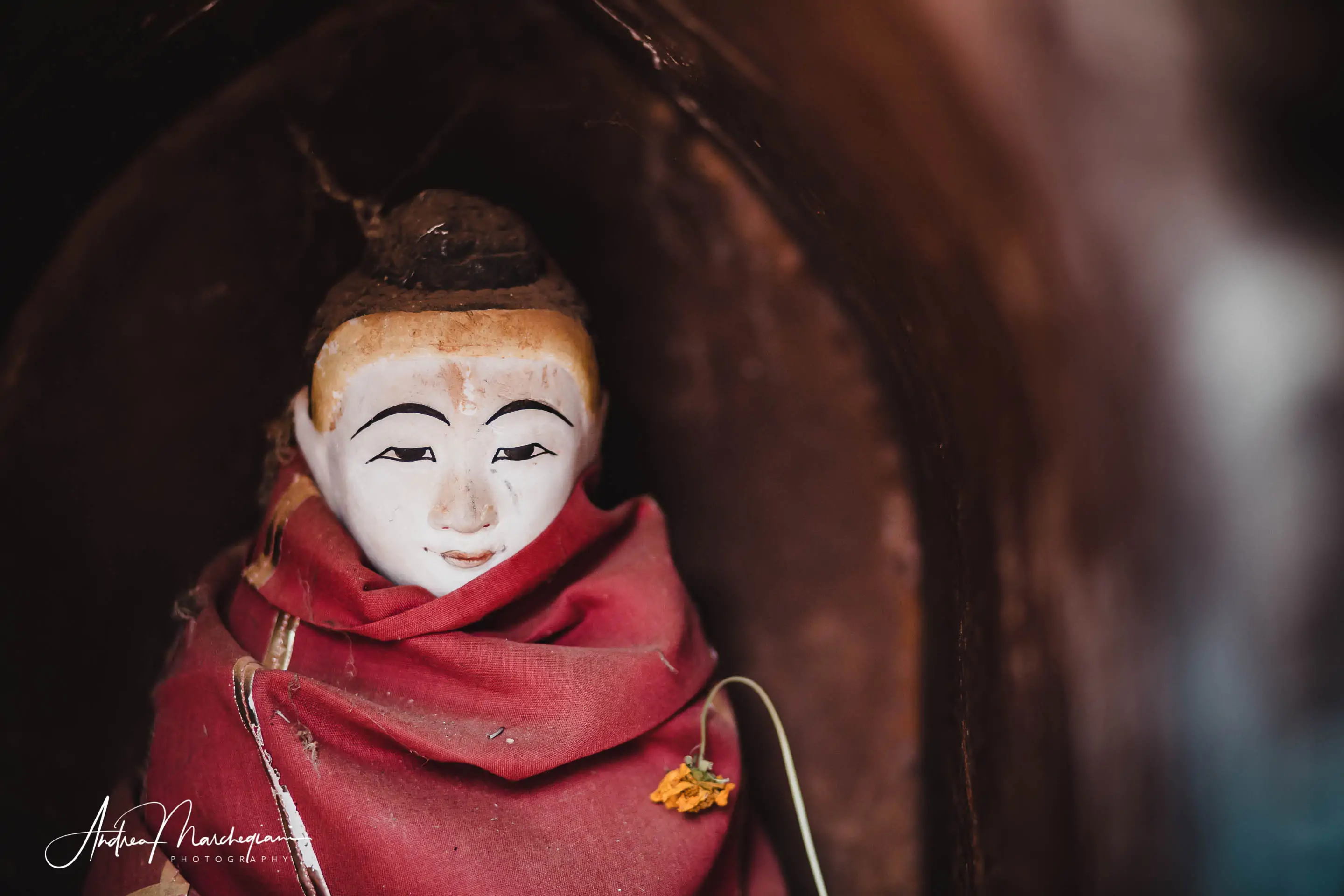
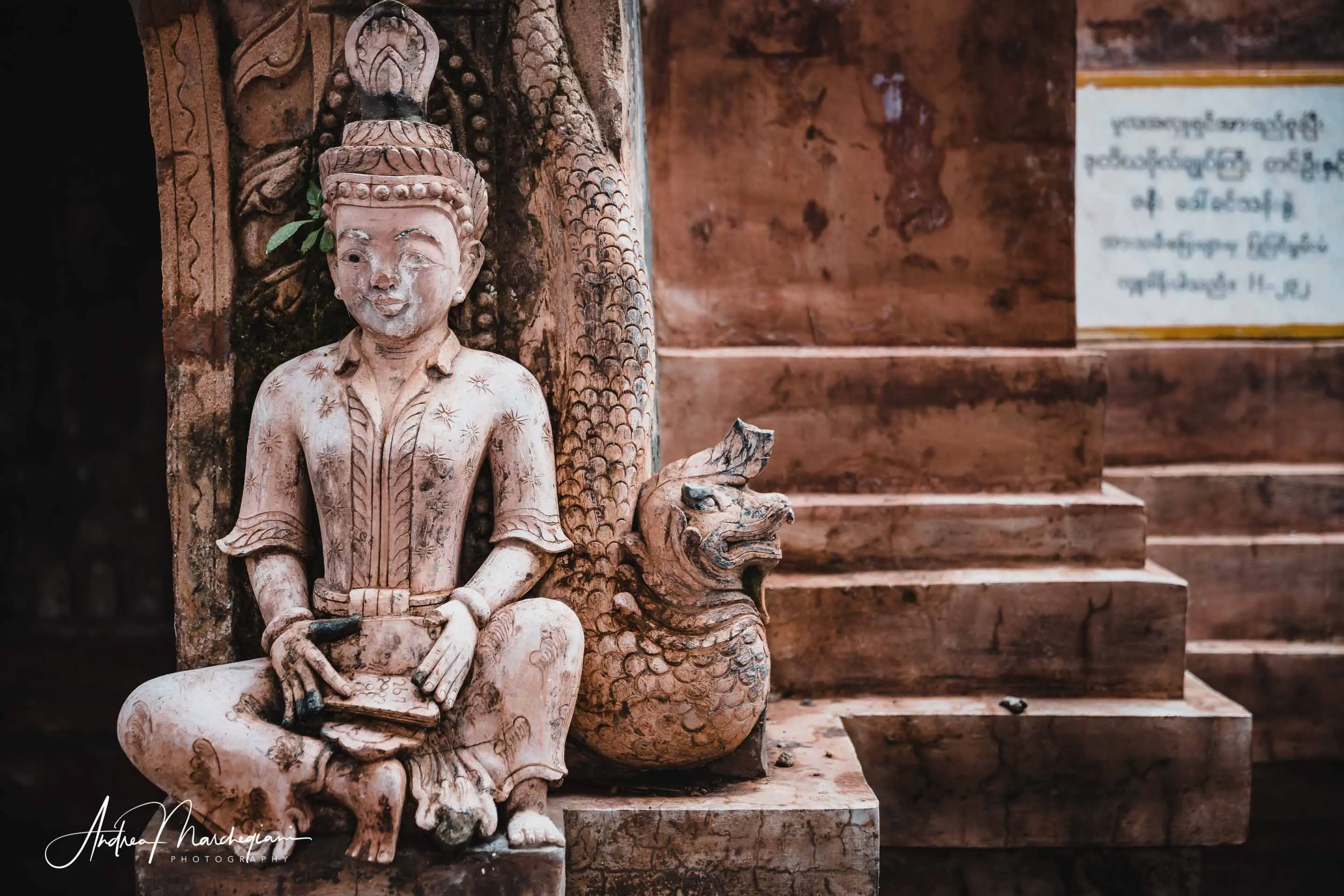
The sound of a thousand bells
I start walking down Kakku’s alleys. It looks like being in a timeless stone forest. The stupas, arranged in a linear and geometric way, are interspersed with paths you can walk along. The perspective keeps changing as you move along the alleys, so you can never guess what is about to come next.
Many stupas are in a state of disrepair, with their metal spikes upside down as if they are about to fall to the ground. The bases are embellished with statues, decorations and friezes, while the heart of each building is inhabited by a small serene Buddha.
Thousands of bells are hanging from the iron spires: the wind shakes them, producing a loud music which confuses the mind and helps meditation.
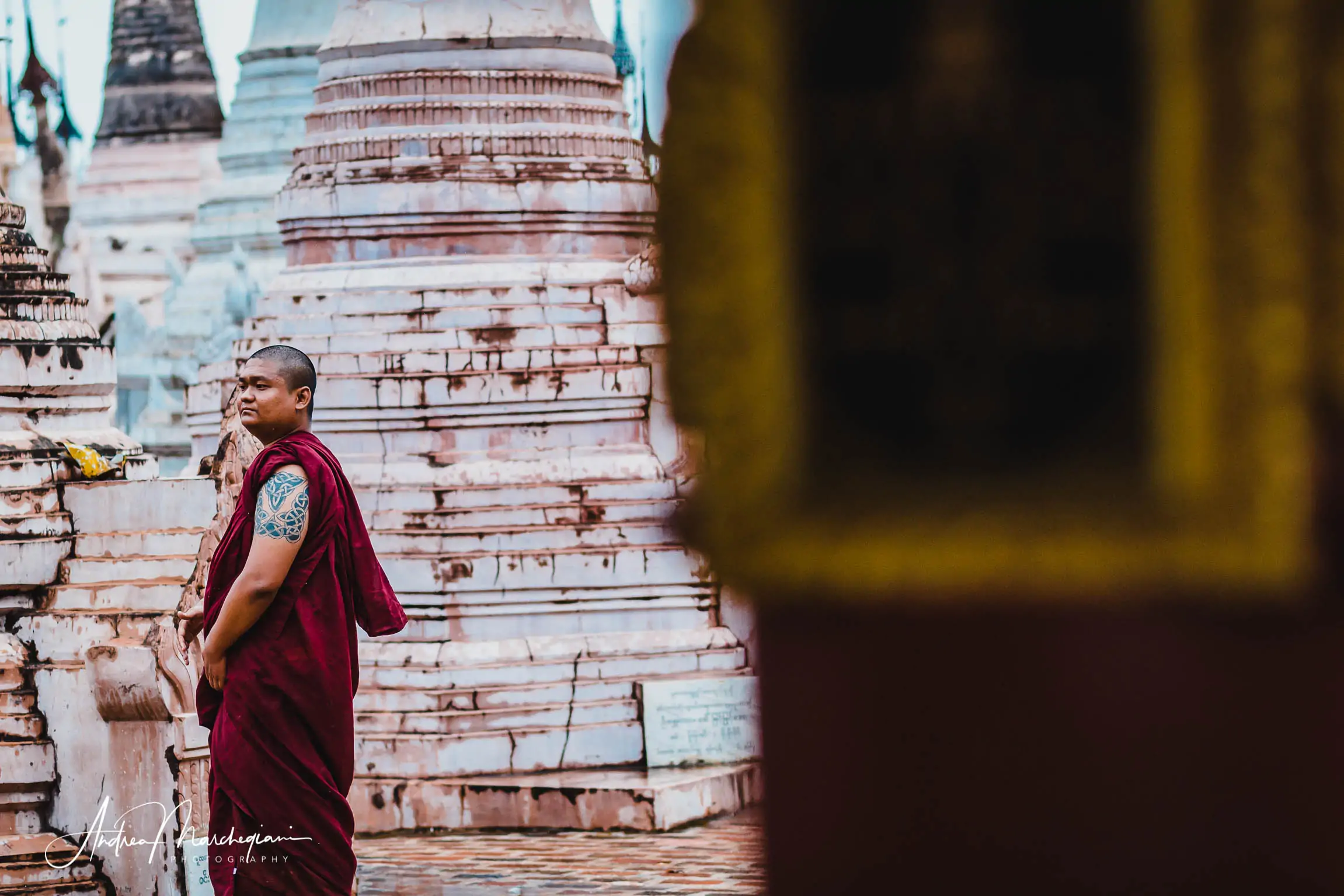
Kakku, between abandonment and reconstruction
This state of suspension between dream and reality, between past and present, makes Kakku really amazing.
Even the conditions of delicate neglect of the buildings is fascinating. Walking among Kakku’s pagodas, you share its mysterious past, made of unknown stories, experiences, thoughts. But it’s a Western fantasy.
A stupa is a spiritual monument that represents the body of Buddha and the path that leads to enlightenment. For a Buddhist there is nothing fascinating about seeing a dilapidated stupa that risks collapsing on the ground.
For this reason, local institutions invite pilgrims to leave votive offerings to allow the restoration of the area. Often these interventions are very invasive and do not respect the original architectural styles. With every pagoda restored, Kakku loses some of its archaeological charm. Reluctantly, I try to accept that everything changes… or dies.
